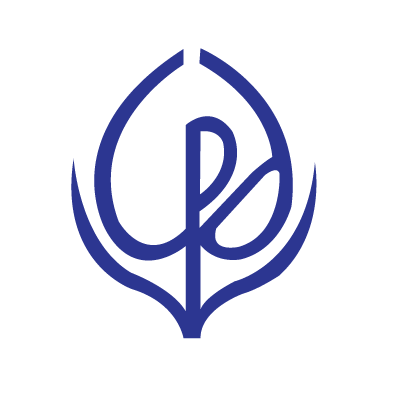
Presentations:
- National Rooftop Solar Programme: Proposals on the design, implementation, and monitoring and evaluation
- National Rooftop Solar Programme: Public Private Partnership Model (PPP Model)
CPD calls for the National Rooftop Solar Programme to begin with carefully selected pilot projects, rather than a simultaneous nationwide rollout. Drawing on past failures—including the underwhelming Rooftop Solar System—CPD stressed that a measured, evidence-based approach is essential for success.
This recommendation emerged at the media briefing titled ‘National Rooftop Solar Programme: Proposals on the design, implementation, and monitoring and evaluation’ held on Sunday, 27 July 2025 organised by the Centre for Policy Dialogue (CPD)at its own premises.
In his introductory remarks, Dr Khondaker Golam Moazzem, Research Director, CPD, remarked ‘The interim government plans to establish connections for nearly 3,000 megawatts of electricity by December 2025. These installations will be made in government infrastructure, schools, and hospitals. This initiative is part of the government’s renewable energy policy, which aims to reach 20 per cent renewable energy by 2030 and 30 per cent by 2040’.
He added, ‘Previous rooftop solar programmes in Dhaka led to installations that were more symbolic than functional, fostering negative perceptions about renewable energy, which we must overcome to ensure the success of this new initiative’.
In her keynote presentation, Ms Helen Mashiyat Preoty, Senior Research Associate, CPD, highlighted ‘The government’s plan to install 3000 MW of rooftop solar on public institutions is commendable, but premature implementation without feasibility assessments, clearly defined institutional roles, or coordinated oversight could undermine its impact’. In this context, CPD recommends starting in areas with high solar potential, grid readiness, and institutional capacity to manage installations and maintenance.
She underscored that, to ensure sustainable implementation, agencies such as Bangladesh Power Development Board (BPDB), Bangladesh Rural Electrification Board (BREB), and Sustainable and Renewable Energy Development Authority (SREDA) must first clarify their responsibilities. Each installation should be preceded by structural analysis, shadow studies, and site-specific financial modelling. CPD further emphasises that procurement must be handled by accredited vendors, and all installations must comply with stringent technical standards.
For financing, CPD proposes that Bangladesh Bank introduce a concessional green energy loan scheme with a lower interest rate with longer loan repayment period, alongside sovereign guarantees to reduce investor risk under the OPEX model. Without these mechanisms, the private sector is unlikely to commit capital to large-scale deployment.
Maintenance is another critical challenge. Under the CAPEX model, systems often deteriorate due to unclear accountability and weak follow-up. CPD suggests embedding 5–10-year maintenance clauses in EPC contracts, supported by a government-backed guarantee fund and digital monitoring systems linked to a central solar dashboard.
Mr Nasir Uddin Chowdhury, General Member, Bangladesh Solar and Renewable Energy Association (BSREA), reflected on the challenges with previous rooftop solar projects, stating, ‘Our experience with residential rooftop solar installations has been disappointing, with many systems criticised for their lack of functionality. For example, in my own Dhaka building, 3-5 kW systems were installed but didn’t work. In contrast, solar installations in villages, which were implemented from 2003 to 2021, have been successful and continue to operate.’
He added, ‘These solar systems have lasted almost 25 years with regular maintenance, demonstrating that solar home systems themselves aren’t the issue—rather, it’s the poor installations that caused the problems’.
‘The Power Division has been closely monitoring the national rooftop solar programme’s implementation, with a committee reviewing the tender documents’ said the Director of Renewable Energy and Research & Development Department, BPDB, Mr Moniruzzaman.
He added ‘We are integrating remote monitoring facilities to ensure efficient operation and grid stability, confident that the system will enhance energy savings and strengthen our distribution network’
Engr. Md. Mujibur Rahman, Director (Deputy Secretary), Renewable Energy Development, SREDA, highlighted ‘The solar installations planned for homes in 2010 were ineffective because there was no obligation for them to generate electricity continuously. With the new net metering system, we must convert those meters and set a requirement for a certain percentage of electricity generation to ensure that people will meet the necessary targets’.
Mr Sardar Mohammad Zafrul Hasan, Chief Engineer (Planning & Design) at Power Grid Company of Bangladesh Limited (PGCB), remarked ‘Our Power Division has tendered for 1,500 MW of solar capacity and, after consulting on grid stability, we foresee no issues’.
He added ‘With the 3,000 MW rooftop solar target, we are confident there will be no grid problems. To support this, we’ve already initiated key mitigation measures, including 100 MW and 35 MW battery energy storage projects’
Sharing his concerns, Mr Ramprasad Pal, Deputy Director, Renewable Energy Department, Bangladesh Rural Electrification Board, said ‘When the net metering system was introduced, issues arose, particularly with the rural electricity associations. Immediately after its implementation, a drop in revenue was observed, which remains a significant concern. If the OPEX model were implemented, they could generate electricity and sell it back to consumers, thereby incentivising them’
Reflecting on the National Rooftop Solar Programme, Engineer Naznin Akter, Managing Director, GSOLARIC Bangladesh Ltd, said ‘I respectfully disagree with the notion that the net metering system has completely failed. It is still ongoing, though there are some issues with domestic connections. However, industrial connections, like those from companies such as Hamim Group and Akij Group, have been very successful’
Mr Khondkar Morshed Millat, Former Director, Sustainable Finance Department at Bangladesh Bank, discussed about the refinancing scheme and said ‘A separate scheme is not necessary. The existing 1,000 crore BDT green refinancing fund from Bangladesh Bank already includes solar rooftop projects, providing ample support. When institutions approach the bank for solar financing, the first question is, “Are you going to horizontally or vertically integrate?” The main challenge with horizontal integration is the lack of land availability, but rooftop solar remains the prime objective, which is certainly achievable’.
In his concluding remarks, Mr Mostafa Al Mahmud, President, Bangladesh Solar and Renewable Energy Association, said ‘This programme will create jobs for over 100,000 people, both directly and indirectly. In fact, I believe the number will be much higher—perhaps 2 to 2.5 million people. Some will become importers, others will be retailers or wholesalers, and many others will be involved in various roles, ultimately spreading across the grassroots level, which will contribute to sustainable development. This is a major and effective development’.
An open-floor Q&A session with journalists from both print and electronic media followed the discussion.



